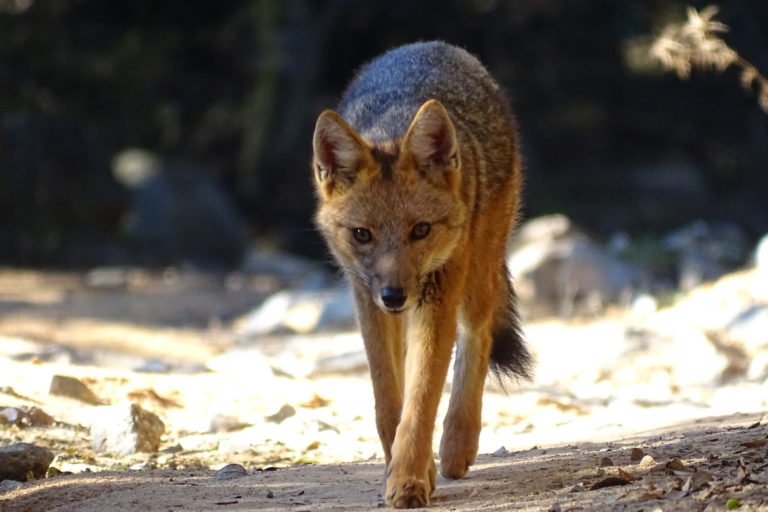- The world’s wealthiest nations have made grand statements and offered big monetary pledges to save the world’s tropical rainforests so they can continue sequestering huge amounts of carbon.
- But as COP27 draws to a close, policy experts and activists agree that funding so far is far too little, and too slow coming, with many pledges still unfulfilled. Without major investments that are dozens, or even hundreds, of times bigger, tropical forests will keep disappearing at an alarming rate.
- The Democratic Republic of Congo (DRC) offers a case study of just how dire the situation is becoming. While some international forest preservation money is promised and available, it is insufficient to stop companies from leasing forestlands to cut timber and to convert to plantations and mines.
- Some experts say that what is urgently needed is the rapid upscaling of carbon markets that offer heftier carbon credits for keeping primary forests growing. Others point to wealthy nations, who while still cutting their own primary forests, encourage poorer tropical nations to conserve theirs without paying enough for protection.
SHARM EL SHEIKH, Egypt — The first big news of the COP27 climate conference was a forest promise: UK Prime Minister Rishi Sunak announced a 26-nation partnership to conserve woodland ecosystems as “one of the best ways of getting us back on track to 1.5 degrees” of warming.
This Forest and Climate Leaders Partnership is meant to martial efforts to halt and reverse forest loss and land degradation by 2030, as 145 countries pledged in the Glasgow forests declaration at COP26.
But one year on, countries are lagging behind the pace needed to reach the Glasgow goal, experts said. Most worryingly, the funding pledged to fight deforestation is far from enough and has often failed to arrive.
“Here at COP27 there’s no promise of financing,” said Ignace Monza Bonda, minister of environment and sustainable development of Mai-Ndombe in the Democratic Republic of Congo. With two-thirds of the country’s population in poverty, villages in the rainforest have little choice but to engage in logging or charcoal production to survive, he explained.
“The communities are the real custodians of those resources,” Bonda said. “When the forest as a resource can generate revenue income, these communities will have the potential to avoid this kind of harmful development. Then these communities won’t remain in the same eternal poverty.”
Weak COP27 cover text won’t save Congo
This week at COP27, Brazil’s president-elect Luiz Inácio Lula da Silva gave hope that the rampant destruction of the Amazon rainforest would soon end, promising “zero deforestation and degradation” by 2030 and meeting with ministers from Norway and Germany about unfreezing $500 million in the Amazon Fund.
But while deforestation declined 6.3% globally in 2021, countries need to reduce it 10% every year from 2021 to meet the Glasgow goal, according to the recent Forest Declaration Assessment. COP27 offers the “last opportunity” for countries to set themselves up to reduce CO2 emissions from forest loss by 1 billion tons by 2025, and yearly after that, to reach the Glasgow goal, a UN Environmental Program report found.
One need look no further than the Congo Basin, the world’s second largest rainforest, to see the seriousness of the funding problem: Forest loss there increased 5% in 2021, and many fear that its rainforest could quickly become beset on all sides by slash-and-burn land clearing, as corporate concessions for timber, plantations and cobalt and copper mining increase.

The Congo’s forest is essential for tackling both the biodiversity and climate crises the world faces. It possesses the largest carbon sink in the tropics, removing over 600 million tons of CO2 equivalent a year, almost six times more than the Amazon. And together with the peat underneath much of it, it holds 8.1 billion tons of “irrecoverable” carbon that, if it were released, could not be recaptured in time to prevent dangerous climate impacts.
But the draft of the main COP27 cover text released this Friday morning failed to mention, among other things, protecting waterlogged forests and tropical peatlands like those found in the Congo.
“What are we doing here at these negotiations if they will remove this very important element to fight against the warming of the planet?” Ève Bazaiba, deputy prime minister for environment and sustainable development of the Democratic Republic of (DRC), told Mongabay and other journalists.
Instead, the draft text focused on the critical role of “healthy forests” in climate regulation, a general term forest campaigners say has been used to justify logging. The language should instead be about preserving “primary forests,” said Virginia Young of the Australian Rainforest Conservation Society, an NGO. Intact primary forest ecosystems absorb more carbon than logged forests or tree plantations, and are also more resistant to carbon-releasing fires and disease, which are on the increase due to climate change.
“What’s needed now is to recognize that the integrity of forests is really important, not this ‘healthy forest’ rubbish,” Young said. “It’s logging PR, it’s greenwashing.”

Important carbon sink
International funding measures already on the books are not near enough to stop global deforestation, and in some cases have not been paid out.
In announcing the Forest and Climate Leaders Partnership, Sunak said public donors have spent $2.67 billion of the $12 billion committed under the 2021 Glasgow pledge to protect and restore forests. But so far, only Germany has committed additional funding under the partnership, doubling its initial Glasgow contribution to 2 billion euros (slightly over $2 billion). Talks to replenish the UN’s Green Climate Fund, which has also funded forest work, have not yet been successful.
Funding to protect and restore global forests must increase by 200 times, to $460 billion, to meet the goals of the Glasgow pledge, a progress report found.
In DRC, one of the poorest countries in the world, forest will inevitably be leased for resource extraction, say experts, unless international funding makes it more profitable to conserve it. In July, the country announced the auction of oil and gas blocks in the rainforest, including in Virunga National Park, the world’s most important gorilla sanctuary.
When U.S. climate envoy John Kerry asked DRC President Félix Antoine Tshisekedi Tshilombo to stop the auctions at the pre-COP in Kinshasa in October, Tshisekedi pointed out that the US was still developing oil on its own territory, according to attendee Kevin Conrad of the Coalition of Rainforest Countries. “[Y]ou’re drilling oil in Texas, why are you coming here and telling me not to drill?’ Tshisekedi said, according to Conrad.

While the United States has promised to invest $9 billion toward conserving global forests by 2030 and formed a “working group” with the DRC to protect peatland and rainforest, it has not entered into a bilateral deal to commit funding to forest preservation in the country. When asked by Mongabay at COP27 if any such deal was in the works, John Kerry said “we’ll have to wait and see.”
At COP26, the UK and DRC also signed an agreement to drum up $500 million for the Central African Forest Initiative over the next five years to protect the Congo Basin. But a year later at COP27, Bazaiba said none of this funding had been delivered, explaining that “they’re still working on it.”
“We have the potential, we have the forest,” she told Mongabay. “Those polluting countries, they should put funding together, working together to preserve the environment, to save humanity.”
Glenn Bush of the Woodwell Climate Center, who’s been advising the DRC delegation, said the scale of funding so far was critically insufficient. With conservation costing $10 to $15 per hectare, the DRC would need at least $500 million dollars each year, not every five years, to effectively protect its primary forest.
“The scale of funding being pledged [internationally], although it sounds like a lot, actually isn’t a lot in terms of forest conservation,” he said. “This has to go into sustainable activities with tens of thousands of rural households. That’s usually expensive.”
Inoussa Njumboket Njumboket of WWF DRC said international funding for Congo rainforest preservation needs to be put on a stricter timeline. While the government has secured land tenure rights for local communities to more than 6 million acres, “Up to now there’s no implementation at the local level” to stop illegal logging and mining.

Are carbon markets the solution?
With big international pledges failing to deliver enough money to fight deforestation, some advocates see the answer in carbon markets: Countries and companies could pay tropical countries to avoid cutting their old trees down, and count the carbon emissions avoided against their net zero goals.
But if carbon markets are to work, more transactions are urgently needed to boost prices. In its report on the Glasgow target, the UN Environment Programme said the average price of carbon credits for deforestation emissions reductions needed to at least triple and reach $30 a ton for these kind of deals to regularly happen.
The LEAF Coalition, a group of public and private donors committed to buying carbon credits for avoided deforestation on voluntary carbon markets, said at COP27 it had increased its pool of money from $1 billion to $1.5 billion. While that’s good news, it “has to be multiplied by ten, and the payments have to get out of the door much, much faster,” said Gabriel Labbate of the UN Environment Programme.
Some policy experts raise questions about the standards being applied on voluntary carbon markets, wondering if existing rules can adequately protect primary forest from being logged and replanted.
“There is a conscious process of blurring between ‘forests’ and ‘tree cover’ … so you can sell carbon credits,” said Souparna Lahiri of the Global Forest Coalition. The risk is that carbon markets will not differentiate sufficiently between natural forests able to store large amounts of carbon, and plantation forests which don’t function nearly as well.

The UNEP report said voluntary carbon markets must develop mechanisms to deal with such “reversals and leakage,” such as when a carbon credit forest burns down — a likely scenario as the climate heats up.
Conrad, who helped devise the UN’s REDD+ standards to reduce emissions from deforestation and forest degradation, said the voluntary markets are still so small as to be “irrelevant” and companies should just buy carbon credits under the same REDD+ framework that countries do, something that is meeting with some success in Brazil. It’s also hard to hold the many international rainforest funding pledges accountable, he said. Only 4% of REDD+ emissions reductions have been paid for.
“We have a REDD+ mechanism, 90% of the world’s rainforests are already in it, they’re already agreeing to monitoring,” he said. “Why are you creating all these things outside the Paris agreement? Why don’t you just empower what you’ve already agreed to?”

Tree planting not the answer
With deforestation talks focusing on “High Forest, Low Deforestation” (HFLD) countries because of their vast carbon sequestration potential, it can easily be forgotten that high-income temperate nations are often degrading what little old-growth forest they have left.
In announcing Canada was joining the Forest and Climate Leaders Partnership, Prime Minister Justin Trudeau talked about planting 2 billion trees rather than halting his country’s deforestation. The mitigation benefits of tree planting are “negligible” in the current decade, according to the recent Land Gap Report.
Kate Hughes, director for international climate change in the UK government’s Department for Business, Energy, and Industrial Strategy, told Mongabay that the partnership “will be about reducing deforestation and restoring forests, in that order.”
But Canada has been continuing to log old-growth forest in British Columbia, and the province’s forests now emit more carbon than they sequester. A Mongabay reporter recently witnessed clear cutting in old growth forests on Vancouver Island that were slated for protection. Hundreds of protesters have been arrested, but government is mostly silent.
Asked how it could conserve primary forests worldwide if it failing to do so at home, Natural Resources Canada said in a statement that “forest harvesting” is “not considered deforestation as affected forests will regenerate.” That statement is technically true, but by the time cut forests regrow, the world will likely be out of time to avoid climate disaster.
“Developed countries could lead by example. It’s not all about primary tropical rainforest. The most depleted forest biome is the temperate. And the boreal forest is absolutely critical,” to carbon storage, Young said. “We also need to protect and restore the integrity of our high-carbon ecosystems, and the forests are our most high-carbon ecosystem.”
Banner image: Silverback gorilla in Kahuzi-Biega National Park, Democratic Republic of Congo. Image by Joe McKenna licensed under the Creative Commons Attribution 2.0 Generic license.
FEEDBACK: Use this form to send a message to the author of this post. If you want to post a public comment, you can do that at the bottom of the page.












